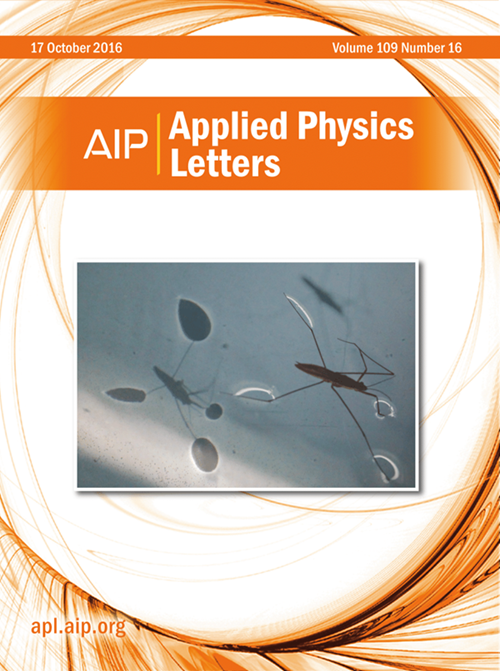基于光子时间晶体的双通道线圆偏振转换
IF 3.6
2区 物理与天体物理
Q2 PHYSICS, APPLIED
引用次数: 0
摘要
在时间维度上对电磁波的操纵为控制这些波提供了更高的自由度,这导致了时变介质领域的重要研究。以往对时变介质中极化转换的研究已经实现了线对线的极化转换,改变了电磁波振动的方向。本文提出了一种双通道线性-圆极化转换(DLCPC)方法,将线性极化波在正向和反向上都转换成圆极化波。此外,研究表明,DLCPC可以在s波和p波的带隙内实现,从而实现可控的波放大效果。利用传输矩阵法计算的理论结果与基于时域有限差分法的数值验证进行了比较,验证了研究结果的有效性。本研究拓展了光子时间晶体(PTCs)领域的研究范围,展示了PTCs在DLCPC中的应用,并建立了这种转换与PTCs的波放大效应之间的关系。在不影响DLCPC的情况下实现可控波放大效果。本文章由计算机程序翻译,如有差异,请以英文原文为准。
Dual-channel linear-to-circular polarization conversion based on a photonic time crystal
The manipulation of electromagnetic (EM) waves in the time dimension provides a higher degree of freedom in controlling these waves, which has led to significant research in the field of time-varying media. Previous studies on polarization conversion in time-varying media have achieved line-to-line polarization conversion, altering the direction of EM wave vibration. This paper proposes a dual-channel linear-to-circular polarization conversion (DLCPC) that transforms linear polarization waves into circular polarization waves in both the forward and backward directions. Additionally, it is shown that DLCPC can be achieved within the bandgaps of both s-waves and p-waves, enabling a controlled wave amplification effect. The theoretical results, calculated using the transmission matrix method, are compared with numerical verifications based on the finite-difference time-domain method, confirming the validity of the findings. This study expands the research scope in the field of photonic time crystals (PTCs), demonstrating the use of PTCs for DLCPC, and establishes a relationship between this conversion and the wave amplification effect of the PTCs. The controlled wave amplification effect is achieved without impacting the DLCPC.
求助全文
通过发布文献求助,成功后即可免费获取论文全文。
去求助
来源期刊

Applied Physics Letters
物理-物理:应用
CiteScore
6.40
自引率
10.00%
发文量
1821
审稿时长
1.6 months
期刊介绍:
Applied Physics Letters (APL) features concise, up-to-date reports on significant new findings in applied physics. Emphasizing rapid dissemination of key data and new physical insights, APL offers prompt publication of new experimental and theoretical papers reporting applications of physics phenomena to all branches of science, engineering, and modern technology.
In addition to regular articles, the journal also publishes invited Fast Track, Perspectives, and in-depth Editorials which report on cutting-edge areas in applied physics.
APL Perspectives are forward-looking invited letters which highlight recent developments or discoveries. Emphasis is placed on very recent developments, potentially disruptive technologies, open questions and possible solutions. They also include a mini-roadmap detailing where the community should direct efforts in order for the phenomena to be viable for application and the challenges associated with meeting that performance threshold. Perspectives are characterized by personal viewpoints and opinions of recognized experts in the field.
Fast Track articles are invited original research articles that report results that are particularly novel and important or provide a significant advancement in an emerging field. Because of the urgency and scientific importance of the work, the peer review process is accelerated. If, during the review process, it becomes apparent that the paper does not meet the Fast Track criterion, it is returned to a normal track.
 求助内容:
求助内容: 应助结果提醒方式:
应助结果提醒方式:


